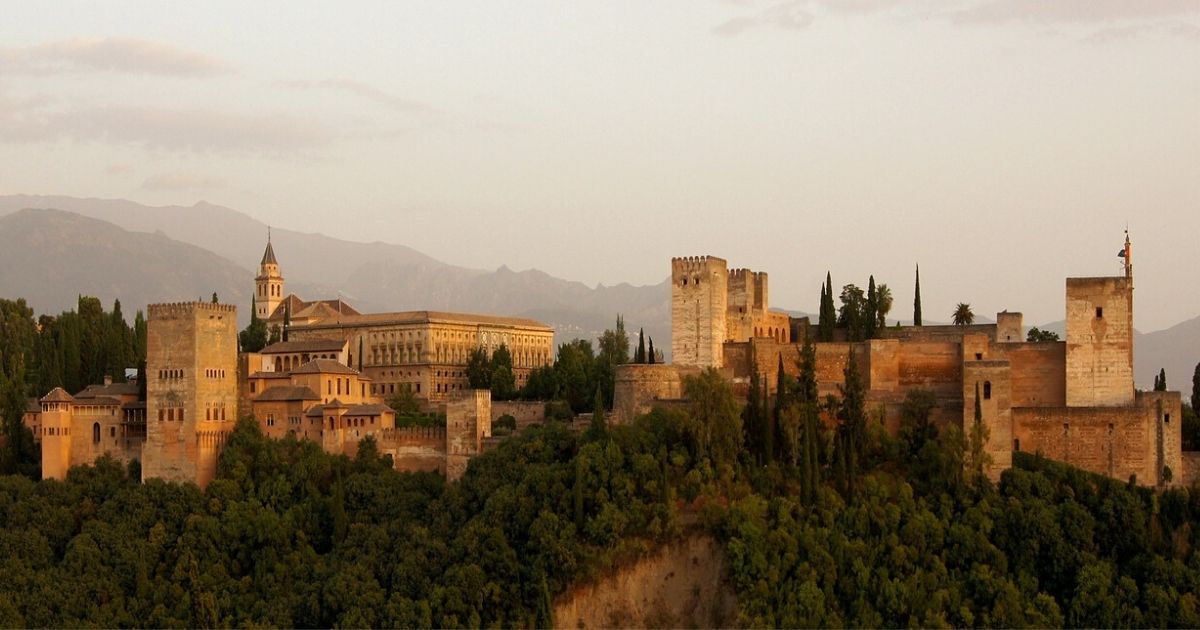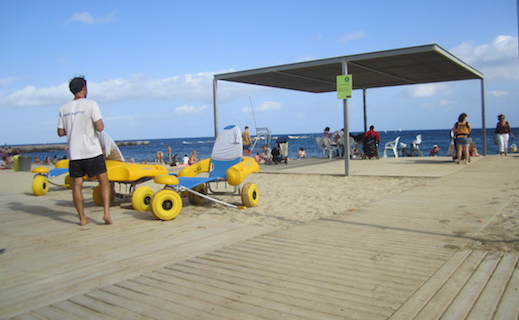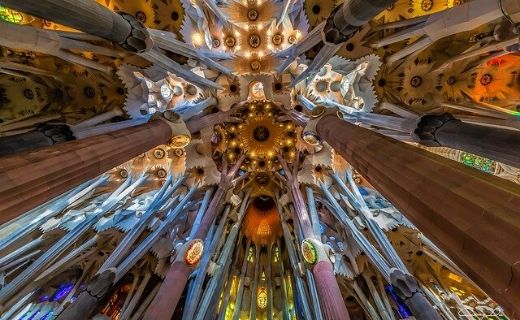In this comprehensive Alhambra accessibility guide, we tell you everything there is to know and give information about the accessibility of the Alhambra. The Alhambra is an ancient fortress and palace situated in Granada and built by Moorish monarchs. Its Alhambra because of the reddish color of the walls. In Arabic, the name stands for ‘red fort or castle.’ When visiting Granada, or even Malága, it is a must to visit the Alhambra. The architecture and decorative works leave you speechless.
To make it easier for you to read this guide, you can click on the subjects mentioned below:
- About the Alhambra
- Alcazaba
- Generalife
- Nasrid Palaces
- Mexuar Palace
- Comares Palace
- Palace of the lions
- Charles V palace
- Accessibility of the Alhambra
- Wheelchair Accessible Tours in the Alhambra
- How to get there
- Ticket information
About the Alhambra
The impressive complex is one of the most famous attractions in all of Spain. Walking/rolling through the rooms and courtyards of the Alhambra feels like you transport back in time to the centuries of Islamic grandeur. Lose yourself amongst the tranquil fountains, the lavish rooms, and the paradisaical gardens for an experience you will not easily forget! Originally designed as a military area, the Alhambra became the residence of the royalty of Granada in the middle of the 13th century. Throughout the 13th, 14th and 15th centuries, the fortress became a citadel with high ramparts and defensive towers, which house two main areas: the military zone or Alcazaba, and the location of the famous Nasrid Palaces.
The complex of monuments has an independent palace opposite the Alhambra, surrounded by orchards and gardens, which was the place where the Grenadian kings relaxed: the Generalife.
The Alhambra consists of multiple different areas. During an accessible tour of the Alhambra we provide, a licensed guide takes you through three of the most important parts of the complex. If you want to know more about this tour or to book it, click here.
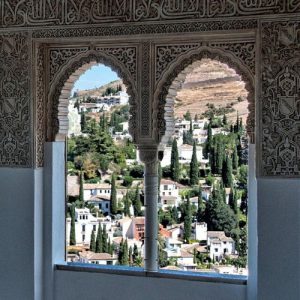
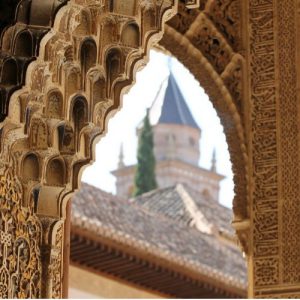
Alcazaba
The first area is called the Alcazaba. It is the oldest part of the fortress, built in the 13th century for the defense of the palace. It exists out of multiple different towers. The Watch Tower is 27 meters high, and from the roof, you have a stunning view. The Keep and the Broken Tower are both over 20 meters high and served for defense. The decoration of the towers is straightforward. Underneath those towers, there are dungeons, where many prisoners spent their last hours. Another very important sight from the Alcazaba is the military quarter. That is the place where soldiers lived in stone houses.


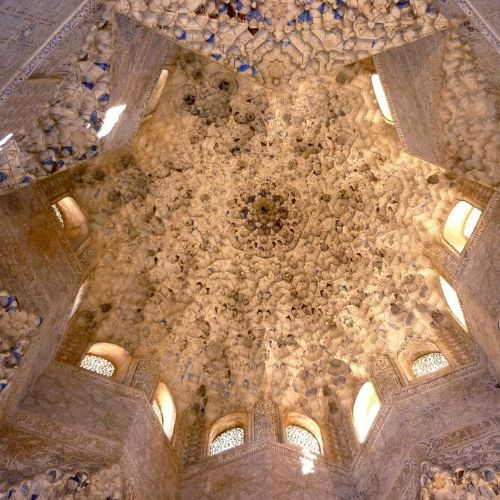

The Generalife
The second area you visit is the Generalife. Here you see The Patio of the Irrigation Ditch that divides the area into two parts. This patio, located in the inner courtyard of the palace, treats you on a beautiful view of Granada and the Alhambra. In this courtyard, you find a lovely little channel running from side to side.
This magnificent property dates back to the time of the Nasrid kings. They came to rest in this beautiful environment surrounded by enchanting terrace gardens, ponds, and fountains in an oasis of greenery. This palace was the central place of the Generalife. But since they neglected it for so many years, not much of the original palace is left. Nowadays, after many renovations, the Generalife looks much like its original.
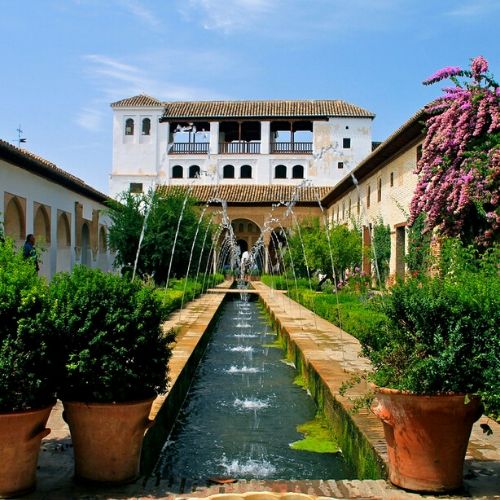
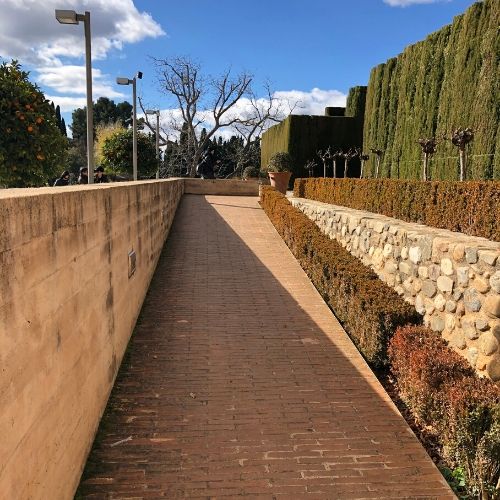

The Nasrid Palaces
The third area takes you to the Nasrid Palaces. These palaces are the highlight of your day. Your eyes can not get enough of the marble columns, gorgeous ceilings, decorative elements, Arabic calligraphy, the use of light and water, etc. These palaces are covered in splendor. Each of them had its specific function to fulfill in the empire of Granada. The accessibility of the Alhambra around the Nasrid Palaces is excellent. To give you easy access, they placed ramps where needed.

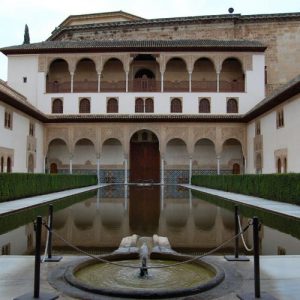
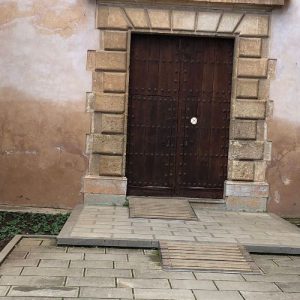
The Mexuar Palace
One of the oldest palaces is the Mexuar Palace. The king and his family initially used this palace as their residence. After they finished building the Comares Palace and the Palace of the Lions, it served as a reception room. On your way to the Comares Palace, you go through the courtyard. This area of the Mexuar Palace is the most impressive. Make sure to have a look at it!


The Comares Palace
The second palace is the Comares Palace. Initially, this palace served as a residence for the sultan until the construction of the Palace of the Lions completed. After that, its function changed. It became the place where the king had his office and where the courtship worked. One of the most important parts of this palace is the Court of the Myrtles. It got its name from the myrtle bushes that surround the mirroring water. On both sides of the pond, there are fountains. For the Moors, these represent the process of life. Another important room is the Hall of the Ambassadors. This room is placed right underneath the Comares tower and is the most majestic hall in the palace. Apparently, multiple important historical events took place here.
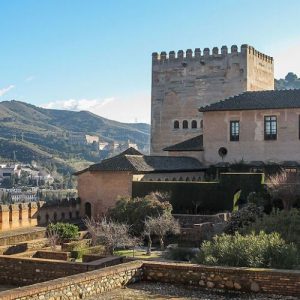
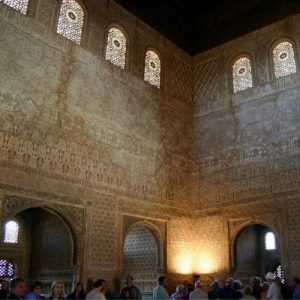
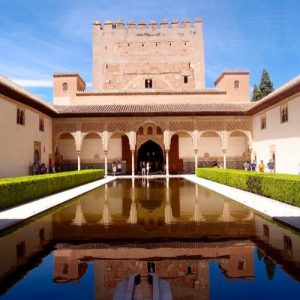
The Palace of the Lions
The third palace is the Palace of the Lions. When this palace got built, it became the part where the private life of the king and his family took place. Here, you find the Patio of the Lions surrounded by three very important halls: The Hall of the Abencerrajes, the Hall of the Kings, and the Hall of the Two Sisters.
The first room got its name from the family Abencerrajes, who would have been beheaded by Boabdil because one of his favorite wives, a part of his harem, had been unfaithful. Their blood had flown into the fountain in the middle of the room.
Magnificent arches and domes characterize the Hall of Kings. On one of the walls, you find a painting that depicts Muslims and Christians. A strange scene since, according to the Koran, Muslims are not allowed to use figurative art. This mural is probably the work of Christian artists. In this room, they celebrated the first mass when the Christian kings had taken the Alhambra and Granada.
The Hall of the Two Sisters is the room where the wife of the sultan and her family lived. The room got its name from a legend that says that two sisters were kept hidden from the outside world in this room.
The Palace of the Lions is accessible via ramps. Therefore, wheelchair users can easily visit this part of the complex. The accessibility of the Alhambra is developed very well in this part.
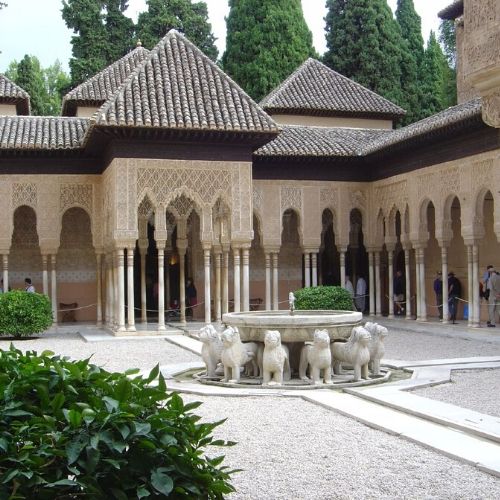


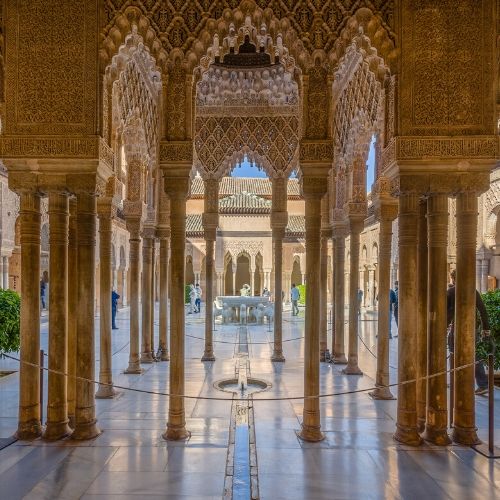
The Charles V Palace
The last prestigious palace is the Charles V Palace. Charles V had this palace built because he wanted a place where all his needs for comfort could be fulfilled since the rest of the Alhambra palaces did not cover those needs. The most remarkable asset of this palace is the central Roman circular courtyard, with two galleries of columns above one another. The upper gallery was never finished.
To access this part of the complex, an elevator is installed for wheelchair users. The accessibility of the Alhambra improved a lot since this change.
Every room of the whole complex has incredible architectural decorations and ensures you are completely amazed.
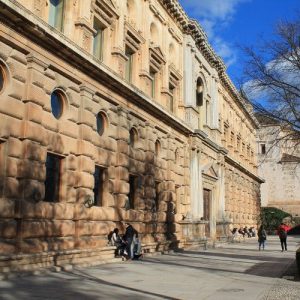

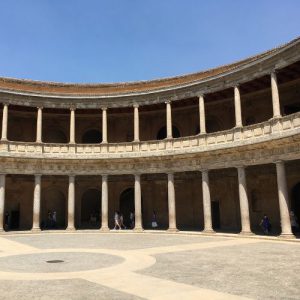
Accessibility of Alhambra
The staff of the Alhambra has tried to make the complex more accessible over the years. At this point, not everything is accessible for wheelchair-users, and that might never happen due to a lot of stairs and abrupt level changes.
Wheelchair accessibility
There is a modified accessible itinerary in the Nasrid Palaces and Generalife and in zones in which it is possible. You can find a wheelchair accessible route on the map at the bottom of this page.
You can access the Alhambra through the main entrance or the Port of Justice. The latter only when you already have your tickets.
Ramps are placed throughout the complex for easy access.
There is a lift to enter the upper floors at the Charles V Palace. The door of the elevator has a width of 80 cm, and inside, the measurements are 120 to 140 cm.
Free wheelchair service is available. You can request this at the main entrance. It is not possible to book wheelchairs in advance. If you don’t want to take the risk of missing out, you can rent mobility equipment through Disabled Accessible Travel.
You find adapted toilets in 3 different places: the main entrance, the Generalife gardens and the service area close to the Palaces and the Port of the wine.
There are parking spaces reserved for reduced mobility visitors next to the entrance.

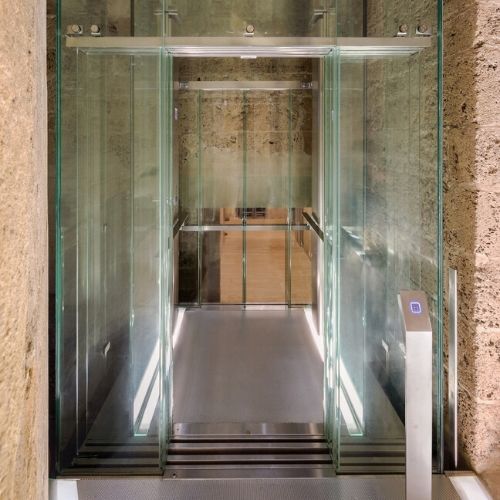
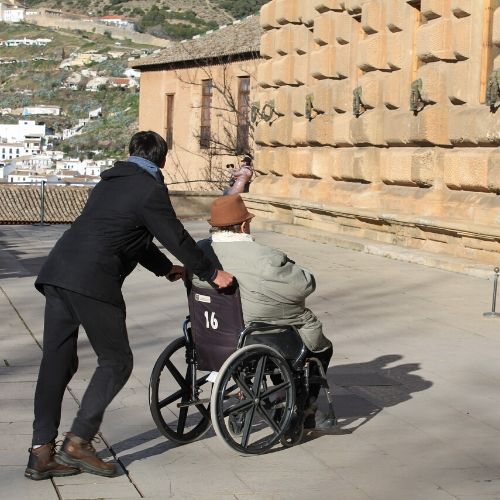
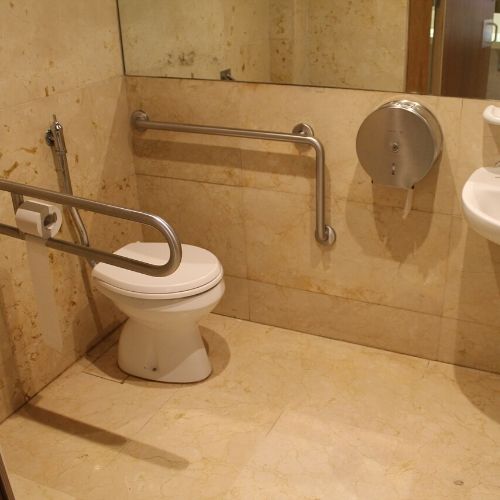
Accessible route
For the most accessible route possible, follow the itinerary shown on the map in blue. Here are a couple of guidelines. The gate to go to Charles V Palace presents no obstacle because they placed a ramp for easy access.
Inside the Museum of the Alhambra, there is a lift on your right, that links both the courtyard and the Museum of Fine Arts on the upper floors. Just enter the Museum of the Alhambra and ask the staff to offer you this facility. Be aware that this Museum is not open on Mondays, and they also close after 14.30 hours on Tuesdays and Sundays.
You go down an area with steps to reach the Nasrid Palaces. The first part of the descent has ramps. The second part has a steep wooden ramp with handrails and a sharp turn at the end. The accessible entrance to the Nasrid Palace has two steps with ramps and brings you directly into the courtyard of the Myrtles.
The Patio of the Lions is flat and has smooth paths that are easy to navigate for wheelchair users. Some areas have a thin layer of gravel, but these are avoidable.
Visual and hearing accessibility
To improve the accessibility of the Alhambra there are sign Language Guides available in Spanish and English, to guide visitors with hearing disabilities around the site. The service is offered free of charge at the Entrance Pavilion, close to the ticket offices.
The Alhambra has installed “Touchpoints” along the route so that visitors with visual impairments can touch and, in this way, perceive the details of the different features that decorate the Monument. Finally, all text is available in Braille, English, and Spanish.
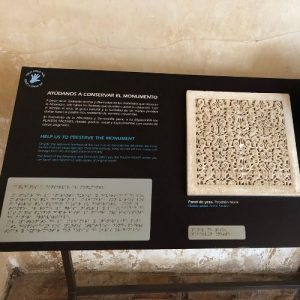
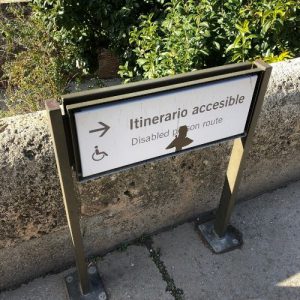
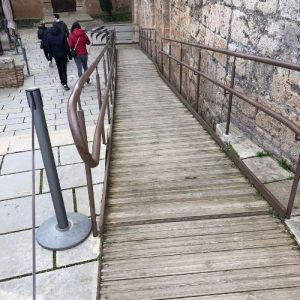
Tours in Alhambra
Do you want to see this beautiful sight yourself? We offer the perfect tour for you, where we arrange transportation to the complex from either Granada or Málaga. Upon arrival, your private licensed guide shows you everything there is to see at this incredible historic site. Because of high demand, we advise you to book at least four months in advance. Tours are pending availability.
How to get there
Located in the heart of Granada at the top of the hill Sabica, Alhambra looks over the city. To get to the complex, you take public transport. Bus lines 30 and 32 take you to the Alhambra and are wheelchair accessible, but do not always function, so it is better not to rely on it. You can reserve adapted transport through us, if necessary. Click on our transfers for more info.
The address of the complex is Calle Real de la Alhambra, s/n, 18009 Granada.
Ticket information
We advise people with reduced mobility to buy a general ticket. This ticket includes the most accessible parts of the complex, as shown on the map at the bottom of this page. People with disabilities (over 33%) receive a discount when presenting a valid disability document.

Get inspired, continue reading
- Wheelchair Accessible Cultural Highlights of Spain
- Explore Disabled Accessible Travel’s destinations
- Accessibility guide of Acropolis and Museum
- Disabled Accessible Travel Expands Accessibility Services with Launch of Mobile App ‘accessaloo’
- Wheelchair Accessible Transfers
- Accessibility of St. Petersburg
- Mobility Equipment Rentals
- 7 Wheelchair-friendly Restaurants in Barcelona
- Everything You Need To Know About Tipping In Europe
- Nova Icaria And 4 Other Accessible Beaches Barcelona Has To Offer
- Accessibility guide Alhambra
- Accessible Train Tickets in Spain – Renfe
- Accessible islands in Europe
- Top 8 Accessible Destinations in Europe
- Accessibility guide Parliament Budapest
- A useful guide to European toilet keys
